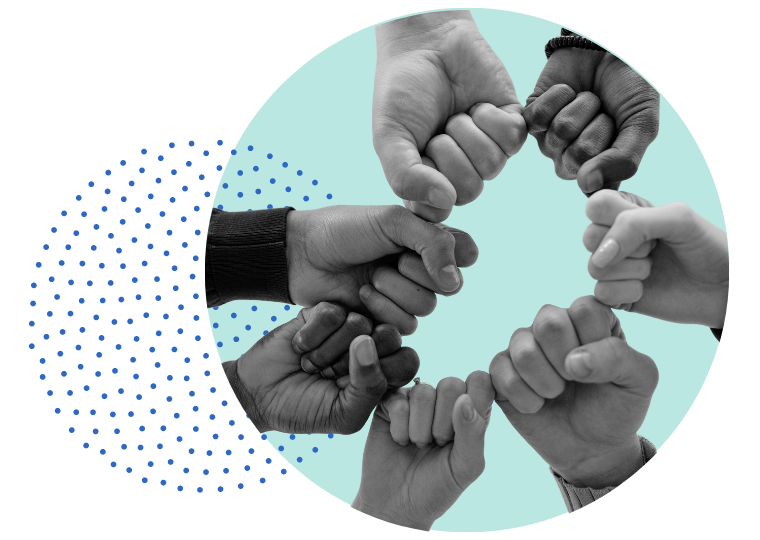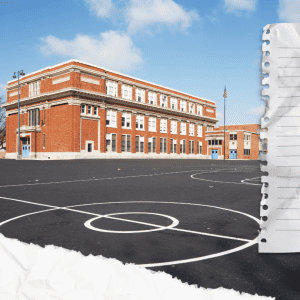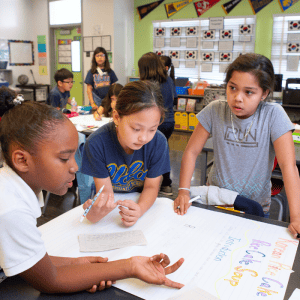
Fostering Shared Ownership
12/06/2023

How does investment in an instructional vision and instructional priorities affect impact?
 No single person can change a system on their own. That’s why shared ownership is crucial to bringing an instructional vision to life.
No single person can change a system on their own. That’s why shared ownership is crucial to bringing an instructional vision to life.
Including teachers, administrators, and community members in implementing your strategy creates a shared reality where everyone has a vested interest in the outcomes. Change is always on the horizon, and the surest way to progress toward a shared vision is by ensuring that those most impacted have a specific part in the solution.
However, the path to shared ownership is not always smooth. You may face differing perspectives on the problem, disagreements about the right approach to a solution, or competing interests across various stakeholder groups. These hurdles can make investing all stakeholders in a shared vision of high-quality instruction complex and challenging. As school systems continue to face high turnover in leadership and the classroom, buy-in and continuity will be especially important for long-term improvement that sticks.
Cultivating Shared Ownership
Building shared ownership requires a deliberate and strategic process. District leaders are pivotal in fostering an environment where stakeholders are heard and actively engaged in the instructional vision. Here are some practical needs that district leaders must address to cultivate shared ownership:
- Open and Transparent Communication: Establish a clear and open line of communication with all stakeholders. Encourage feedback, questions, and suggestions. Hold regular meetings and forums where everyone’s voices are valued. Speak plainly and openly about what is changing, staying the same, and why. Ground decisions in evidence and strategy to diffuse perceptions of preference.
- Collaborative Decision-Making: Define clear roles and methods for involving stakeholders in the decision-making process. When making key decisions, seek input from teachers, administrators, and community members. Invite them to take part in shaping the strategies and solutions that will drive the vision forward.
- Professional Learning: Invest in professional learning opportunities for teachers and administrators. Equip them with the knowledge and skills to contribute effectively to the instructional vision. This builds their confidence and empowers them to take ownership of their roles.
- Ownership Through Data: Share relevant data and insights with stakeholders. Help them understand the current state of affairs, the challenges at hand, and the potential impact of the instructional vision. When stakeholders see the data and its implications, they are more likely to take ownership of the solutions.
- Affirmation: Acknowledge and celebrate achievements along the way. When milestones are reached, whether they are student improvements, successful initiatives, or collaborative efforts, recognize and appreciate the contributions of all stakeholders. This fosters a sense of pride and ownership.
- Shared Goals and Accountability: Define clear, shared goals that align with the instructional vision. Ensure that everyone understands their roles and responsibilities in achieving these goals. Accountability should be a shared commitment.
Building Shared Ownership in Chicagoland
 Leading Educators has helped dozens of school systems across the country work toward stakeholder investment in an instructional vision. Take this example from a school district in Chicagoland.
Leading Educators has helped dozens of school systems across the country work toward stakeholder investment in an instructional vision. Take this example from a school district in Chicagoland.
Before the pandemic hit, student achievement showed significant room for improvement in both math and literacy. Pandemic disruptions then set students back even further, especially in reading. Limited school hours made it difficult to address individual student needs effectively, so leaders knew that teachers would need more support to build expertise in effective differentiation and create tailored acceleration plans.
School leaders decided to create time and structures for teachers to do new learning in their content area on priority standards and acceleration practices. This was a potentially delicate message to send for a few reasons, even though the changes were meant to help teachers.
- First, leaders needed to help teachers productively recognize gaps in their content knowledge so they would feel motivated to engage in new learning without feeling judged or seen as lacking expertise.
- Second, all schools were working from variable data, so there would need flexibility and willingness to work through ambiguity.
- Third, as teachers and students were facing new or worsened mental health challenges, teachers still needed to communicate and believe in all students’ ability to make accelerated progress.
Establishing the Plan
The district made a plan for sustained, job-embedded professional learning for teachers, recognizing that transforming instructional mindsets and mitigating the impact of pandemic-induced learning loss are complex tasks. They decided to use an opt-in, teacher-facing fellowship approach at the school level to foster higher engagement than they had seen with broader district-wide professional development initiatives.
Success for this partnership was not only about individual schools but about catalyzing instructional improvements at scale. This teacher-facing support promises to leave a lasting legacy in Chicago, characterized by greater teacher content knowledge and a commitment to student-centered practices, transforming the educational landscape for years to come.
Here are some questions to consider when addressing shared ownership:
- Who are your stakeholders, and how do they define ownership in the context of shared goals or projects?
- Are you actively fostering engagement and trust among stakeholders, and if not, what steps can you take to achieve this?
- Have you communicated the roles and responsibilities of each stakeholder clearly, ensuring alignment with their values and goals?
- How can you develop strategies to maintain ownership over the long term and resolve stakeholder conflicts or disagreements?
- Are you actively recognizing and celebrating the achievements and contributions of stakeholders to reinforce a culture of ownership?
Take Your Next Step
Does your school or district need support getting buy-in on an instructional vision? We can help with that.
In fact, we’ve helped thousands of leaders nationwide transform their schools into dynamic learning environments where teachers and students learn and achieve greatly together. Learn more about partnering with Leading Educators.









